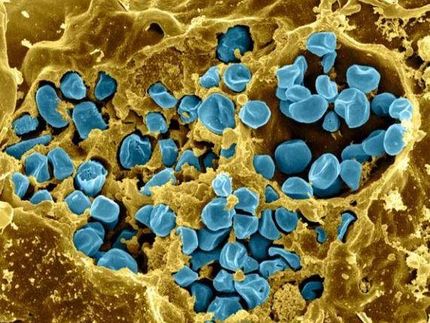Caterpillars tell us how bacteria cause disease
Caterpillars and other invertebrates are helping to provide a cheap, easy and safe way to identify the genes which help bacteria cause infections in humans. Researchers from the University of Bath have discovered a way to sort through large numbers of bacterial gene sequences by testing them in caterpillars to see how their immune systems respond. This new technique known as Rapid Virulence Annotation (RVA) allows them to pinpoint the genes which code for virulence.
With millions of species worldwide, insects provide a massive pool of hosts for bacterial diseases. The immune system of insects is very similar to the inborn immune system of mammals. By living first in insects some bacteria have evolved to survive immune system attack, so when they invade mammals they are equipped to deal with their immune system response and are able to spread rapidly. It is thought this is how bacteria, such as Yersinia pestis - the cause of plague, could have evolved to wreak havoc in humans.
With funding from the Biotechnology and Biological Sciences Research Council's (BBSRC) Exploiting Genomics Initiative, Dr Nick Waterfield and his team are using the similarities between insect immune systems and animal immune systems to their advantage by developing RVA - a new way to investigate the genetic basis of 'virulence' factors in insect pathogens. Instead of looking at the whole genome - which codes for the entire bacteria, Dr Waterfield's team fragment the genome and insert different genes into a harmless laboratory bacterium which they then insert into caterpillars and other invertebrates to study their immune response.
"We are very excited by the opportunities that we can now explore thanks to this new method. It has given us a cheap and easy way of mapping bacterial virulence factors across an entire genome. This will allow us to rapidly and inexpensively bridge the enormous knowledge gap that has grown in the post-genomic era where it has become possible to sequence a whole bacterial genome without necessarily knowing the biological function of individual genes," Dr Waterfield said.
His study focuses on bacteria called Photorhabdus asymbiotica which is known to infect both insects and humans. Dr Waterfield and his team have fragmented the genome for this bacteria and created a DNA library of over 1,500 separate cloned fragments - which covers most of the genome. They then inject the clones into Tobacco Hawkmoth Caterpillars to study the effects.
Their work has shown that clones containing harmless genetic material are recognised and destroyed by the caterpillar's immune system while clones which contain genes which encode for virulence factors survive immune attack.
"This work has several fruitful outcomes," according to Dr Waterfield. "Not only does using this approach reveal 'cryptic' virulence genes, which ordinarily might be masked by more potent factors (when dealing with the whole bacterium), but by using insects instead it will also help reduce the number of mammals, such as rats and mice, needed in future genomics research. It also provides a safer method for researchers working with dangerous strains of bacteria as they are working with fragments rather than the whole bacteria."
The next stage of Dr Waterfield's work will involve working with other research teams across the UK to screen other harmful bacteria using RVA in an attempt to identify genes which could be possible vaccine targets to prevent disease outbreaks in the future.
Most read news
Organizations
Other news from the department science

Get the analytics and lab tech industry in your inbox
By submitting this form you agree that LUMITOS AG will send you the newsletter(s) selected above by email. Your data will not be passed on to third parties. Your data will be stored and processed in accordance with our data protection regulations. LUMITOS may contact you by email for the purpose of advertising or market and opinion surveys. You can revoke your consent at any time without giving reasons to LUMITOS AG, Ernst-Augustin-Str. 2, 12489 Berlin, Germany or by e-mail at revoke@lumitos.com with effect for the future. In addition, each email contains a link to unsubscribe from the corresponding newsletter.



















































